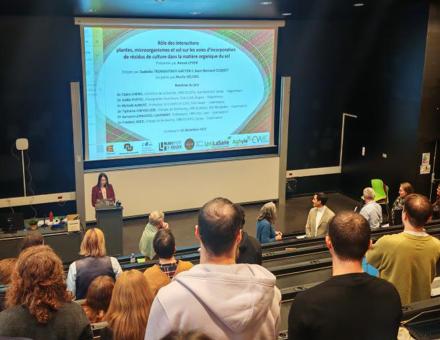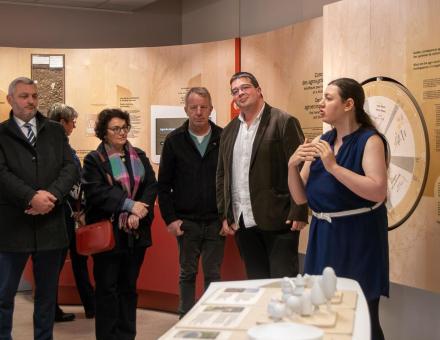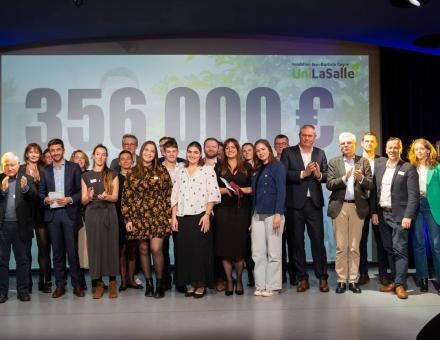What if, instead of sorting them for recycling, we could simply throw plastic packaging into the compost bin with our organic waste? Biodegradable plastics seem to be the best solution for reducing the pollution caused by these materials. However, the biodegradability of these materials still needs to be improved under these conditions.
They are everywhere, and nothing seems to be stopping them. Plastics have invaded our daily lives, our landscapes... and even our bodies. Since the 1950s, production of this practical, versatile and inexpensive material has exploded. Today, it is used in every sector: packaging, clothing, everyday objects, musical instruments, medical devices... even artificial hearts, some parts of which are now made of plastic.
Faced with this omnipresence, recycling is attempting to limit the environmental impact, but it remains insufficient. Plastic accumulates in the oceans in huge floating patches, but also invisibly in the form of micro- and nanoparticles that we ingest when we eat, drink, or breathe.
There are ways to combat this massive pollution, some of which are little known but deserve our full attention. These include biodegradable plastics, provided they are disposed of in a truly appropriate manner at the end of their life cycle.
Materials that degrade quickly
Like cigarettes, the best plastic is probably the plastic we don't use. But in some cases, it's difficult to do without it completely. Take a common example: meat trays in supermarkets. Their plastic packaging protects food from microbial contamination and extends its shelf life, thereby reducing food waste.
This is where biodegradable plastics come into their own. Although they are often made from renewable resources—plant or microbial—this is not always the case: a plastic can be biodegradable without being bio-based, and vice versa. In the case of bio-based plastics, their basic components can be extracted, for example, from the starch contained in wheat grains. Others, such as polyhydroxyalkanoates (PHAs), are synthesized directly by certain bacteria as energy reserves. These polymers are already used today in the manufacture of straws and single-use tableware.
Unlike conventional plastics, which can persist in the environment for centuries, these materials are designed to biodegrade more quickly. They have the ability to break down into natural elements (water, carbon dioxide, biomass) under the action of microorganisms, provided that the right conditions of temperature, humidity, and aeration are met. Like all plastics, they are made up of chains of molecules bonded together. But in biodegradable plastics, these chemical bonds are weaker, particularly the bonds known as esters or glycosidic bonds. This makes them accessible to microorganisms that can break them down, using them as a source of carbon and energy. Under the right conditions, this process prevents the formation of persistent micro- or nanoparticles.
In comparison, only a small proportion of conventional plastics are currently recycled. And unlike glass or metal, they cannot be recycled indefinitely: with each cycle, their mechanical properties deteriorate, making it necessary to add new plastic to the recycled material. Incineration, another option, remains costly and generates polluting emissions, despite energy recovery systems.
Improving the supply chain as an alternative to recycling
Once broken down by microorganisms, these plastics are transformed into simple compounds, such as carbon dioxide or water, and allow bacteria to multiply. They do not directly feed plants, as they are usually lacking the mineral elements necessary for their nutrition. However, once degraded, they can still re-enter the soil's biological cycle by supporting microbial activity.
Their biodegradability can even be improved by adding certain organic components to their composition. These may include waste from the agri-food industry, such as powdered orange or banana peel, after a drying and grinding stage. In addition to accelerating the biodegradation process, this allows these bio-waste products, which often end up in landfills and pollute the surrounding soil and waterways, to be recycled for economic gain.
However, this ability to disappear comes at a cost: biodegradable plastics often have more limited mechanical properties, which vary depending on their formulation. For example, biodegradable plastic bags may have lower tensile strength, making them more likely to break under the weight of their contents. They are also currently more expensive to produce than their conventional equivalents. However, the development of dedicated industrial processes and the establishment of large-scale production units could eventually reduce these costs through economies of scale.
Home composting of plastics: (almost) nothing but advantages
But beware: for a biodegradable plastic to actually decompose, certain conditions must be met. This requires sufficient temperature and humidity, as well as a microbial population capable of breaking down the specific chemical bonds in the material. However, not all natural environments meet these criteria. This is why it is essential to ensure that they are disposed of properly at the end of their life cycle—for example, in a compost heap, which is rich in bacteria and fungi. There are two types of composting: centralized (or industrial) composting and home composting.
Industrial composting involves collecting biowaste, transporting it, and treating it in specific facilities. This model requires costly infrastructure, qualified personnel, and significant logistics, and generates a carbon footprint linked to transport. In France, this sector is still in its infancy. If it were to become a preferred channel for biodegradable plastics, it would require a significant effort to structure it.
Conversely, home composting largely avoids these constraints. Since January 2024, the sorting of bio-waste at source has become mandatory for households. Single-use packaging bearing a home compostability certification (such as the NF T51-800 standard) can therefore be added to food waste in a home compost bin.
Biodegradable plastics certainly degrade more slowly in home composting than in industrial composting, due to lower temperatures and less controlled conditions. However, this local treatment method, which does not involve collection or transport costs, has real potential in a circular economy. For this decentralized sector to develop in a credible, accessible, and efficient manner, it is still essential to improve the biodegradability of plastics, particularly that of the main polymers used in formulations.
Improving the process and raising awareness through individual action
Several avenues are emerging to address this challenge, such as the development of biocomposites incorporating organic co-products, or strategies for biological enrichment of the composting environment. For example, specific microbial strains or natural additives (such as skimmed milk) can stimulate microbial activity and accelerate biodegradation. These approaches could lead to the commercialization of new “compost activators” that could be used by households as well as communities or companies managing community composters—another promising avenue for decentralized composting at the neighborhood or municipal level.
Finally, beyond the technical aspect, this model has an educational value: by participating in the degradation of packaging, consumers become aware of its environmental impact. This awareness can encourage them to reduce their waste production, favor bulk purchases, or adopt reusable containers. And so, little by little, a virtuous circle is set in motion.
About the authors
Jules Bellon, PhD student in materials science, UniLaSalle
Feriel Bacoup, research fellow, UniLaSalle
Richard Gattin, head of the agri-food and agro-industry team, UniLaSalle







